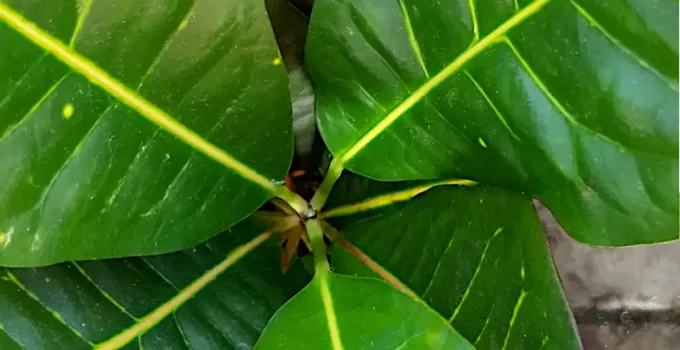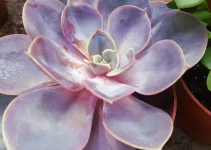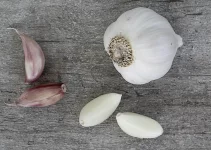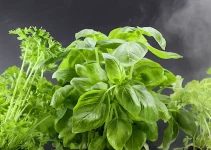Is there a specially-made best fertilizer for crotons that you can get or can you go for a general fertilizer that works for all types of plants?
After all, there are quite a lot of crotons varieties and we’re looking for fertilizers that will work for all.
Since crotons are actually native to tropical forests of southeast Asia and Oceania (India and Malaysia), does that mean that they’re hard to grow and take care of even in other climates?
Is picking out the best fertilizer for crotons enough for growing healthy croton plants or is there more that you need to know?
Let’s answer all of these questions and learn everything we need to know about this brightly colored exotic looking plant so that you can keep it full and fascinatingly colorful.
Table of Contents
My Favorite Best Fertilizers for Crotons
1. Good Value: Miracle-Gro Water Soluble All Purpose Plant Food
I love universal fertilizers because I can use them on my plants like crotons and succulents but also on my herbs, leafy greens, tomatoes, cucumbers, and all my other plants. They’re also very easy to use.
2. Versatile fertilizer: Dyna-Gro Foliage Pro
I actually discovered the Dyna-Gro Foliage Pro when I was looking for hydroponic nutrients. It’s one that works both for hydroponic systems and for soil plants. It’s also one of the easiest to use.
3. Overall best: Dr Earth Organic & Natural Exotic Blend
When it comes to picking the best fertilizers for crotons, the Dr Earth Organic & Natural Exotic Blend is at the top of my list. It contains 4% humic acids. Acid-producing fertilizers are a top choice. It’s wonderful for all tropical plants.
6 Best Fertilizers for Crotons
The proper care for crotons involves a combination of:
- warm climate
- good soil
- sufficient water
- the use of fertilizers
- plenty of light
- and pruning
I’ll talk about each of these factors later. Now, I’ll just focus on reviewing the best fertilizer for crotons, since that’s what landed you here.
Also, if you’re a lover of blooming, gorgeous trees, check out my recommendations for the best fertilizer for magnolia tree.
1. Miracle-Gro Water Soluble All Purpose Plant Food: The Best Universal Fertilizer for Crotons
The Miracle-Gro is one of the cheapest best fertilizer for crotons. It’s pretty awesome and among my top recommendations.
Actually, this one works for absolutely anything from houseplants of all kinds to vegetables, trees, shrubs, and flowers.
So, if you get the Miracle-Gro All Purpose Plant Food you’ll be able to use it on everything indoors and outdoors.
The instructions recommend feeding the plants once every 1-2 weeks when they are actively growing.
I would say that you can feed a croton just once a month and it should be enough.
During winter you can feed the crotons a lot less because the plant is dormant. Once every 2 months is more than enough during wintertime.
As a NPK fertilizer, it has a very good ratio, pretty much what we’re looking for. It’s a 24-8-16 NPK fertilizer. It follows the 3-1-2 ratio that constitutes an awesome fertilizer for crotons.
Just be aware that it comes in a variety of sizes: 8 oz, 1.5 pounds, 3 pounds, 5 pounds and 10 pounds. Choose the smaller size if you don’t have that many plants.
Where to Buy?
Check Price and User Reviews Here
2. Dyna-Gro Foliage Pro: One of the Best Fertilizer for Crotons
It’s easy to see why I picked this one as my second recommendation for the best fertilizer for crotons.
The Dyna-Gro Foliage Pro claims that it’s excellent for tropical foliage plants, which is exactly what our plant is.
It’s a 9-3-6 NPK fertilizer, which is awesome and once again proves that this is the right choice, following the 3-1-2 NPK ratio recommended by the Apopka Research Center in Florida for foliage production.
They also mentioned in their research that foliage plants grow very well with a 1:1:1 ratio so, you can also go for 8-8-8 or 20-20-20 fertilizer, the choice is not that strict.
In addition, Dyna-Gro Foliage Pro contain all 16 minerals that are essential for optimum plant growth.
I just have to warn you that it’s not the cheapest option but it’s worth it.
It’s also very easy to use. This is a liquid concentrate and you only have to use ¼ tsp per gallon, which will make even the 8 oz. option last a very long time.
Where to Buy?
Check Price and User Reviews Here
3. Dr Earth Organic & Natural Exotic Blend: Good Value for Money
Although the Dr Earth Exotic Blend strays away from the 3-1-2 NPK recommended ratio, it’s still an awesome choice because it’s especially made for exotic plants.
It works for palm, tropical plants, and hibiscus.
It’s actually a 5-4-6 NPK fertilizer but that’s not what primarily matters.
The Dr Earth Exotic Blend makes a perfect choice as a best fertilizer for crotons because it contains 4% humic acids. Acid-producing fertilizers are a top choice.
It has the extra magnesium and sulfur that tropical plants require to thrive.
The 1 pound option is pretty cheap, it has a really good price. It mentions that it will feed 20 one-gallon or 4 five-gallon plants. That’s pretty good.
Where to Buy?
Check Price and User Reviews Here
4. Miracle-Gro Indoor Plant Food (Liquid)
What made me want to recommend this liquid plant food from Miracle-Gro? The answer is pretty obvious. It has a croton plant on the packaging.
Obviously, it will work for other indoor plants, too but I’m here to talk about it as the best fertilizer for crotons.
It’s very easy to use. You just pour it into water, according to instructions, and just water the plant as usual.
The other option is to apply it directly to the soil. I think it’s easier to pour it into the water.
If you use it directly to soil, you need to use 1 pump for small plants (succulents, cacti, herbs, strawberries, etc.), 2 pumps for larger pots (over 6-inch diameter). Thus, for plants like our crotons, snake plant, tomatoes, cucumbers, etc. you can use 2 pumps.
If you’re adding to water, add 4 pumps per quart of water (approx. 1.1 liters).
It instantly feeds your plants. This one can also be used on edible plants. It’s pretty much an all-purpose fertilizer for indoor plants.
We are instructed to apply it once a week but you can also use it less often, depending on how your plants look. If you can use it every 2 weeks and even less often during winter when the plant is dormant, like every 2 months or so.
I absolutely recommend it because users who had dying crotons on their hands managed to make them thrive again. That’s the highest praise this Miracle-Gro Indoor Plant Food can receive.
Where to Buy?
Check Price and User Reviews Here
5. Osmocote Smart-Release Plant Food Plus Outdoor & Indoor
Another highly popular all-purpose fertilizer for indoor and outdoor plants is this one from Osmocote.
I actually decided to include it among my recommendations as a fertilizer for tropical plants and all other plants in general because someone once mentioned that it helped their crotons.
The smallest options is 1 pound and the largest is 8 pounds. Choose the smallest if you only have a few plants to feed.
1 pound of Osmocote is enough for 19 gallons of soil. In order to use it, we just have to mix it into 1-3 inches of soil.
If you were to read the manufacturer’s description for this fertilizer, you’ll find out that Osmocote is the original slow-release plant food. I really didn’t know that.
What interests me is that their products’ effectiveness was tested on hundreds of plant species in a variety of climate and soil conditions. That’s definitely what we need to know.
It’s 15-9-12 NPK fertilizer plus micro and secondary nutrients.
Another interesting aspect is that it feeds plants up to 6 full months. Thus, you only have to use it twice a year. That certainly makes things simple.
Where to Buy?
Check Price and User Reviews Here
6. EarthPods Hibiscus & Tropical Flower Formula
This is a pretty expensive fertilizer if you have a lot of plants so I wouldn’t recommend it in that case. If you only have a few, it can be totally worth it because it will last a pretty long time.
I wanted to review it because it’s different. It comes in the form of capsules that are inserted all the way into the soil and then you just water the plant normally.
We get 100 EarthPods for hibiscus and tropical flowers. They’re also organic so that might be a justification for the higher price tag.
I wouldn’t recommend using this capsule during the winter because it won’t be needed as much by crotons.
I would definitely insert one of these into the soil during spring and one or two capsules during summer.
The manufacturer recommends using these plant food capsules every 14-21 days. Thus, you can definitely use them more often that what I mentioned. If you have a lot of plants, you’ll choose to use them less often just to make them last longer because they’re a bit pricey.
For small plants you can to use 1-2 EarthPods, for medium plants 2-4 EarthPods and for large plants 4-8 EarthPods.
The 100 capsules might seem like a lot in the beginning but not when you consider that you have to use quite a lot of them, especially if you have large plants.
Where to Buy?
Check Price and User Reviews Here
Best Fertilizer for Crotons Buying Guide
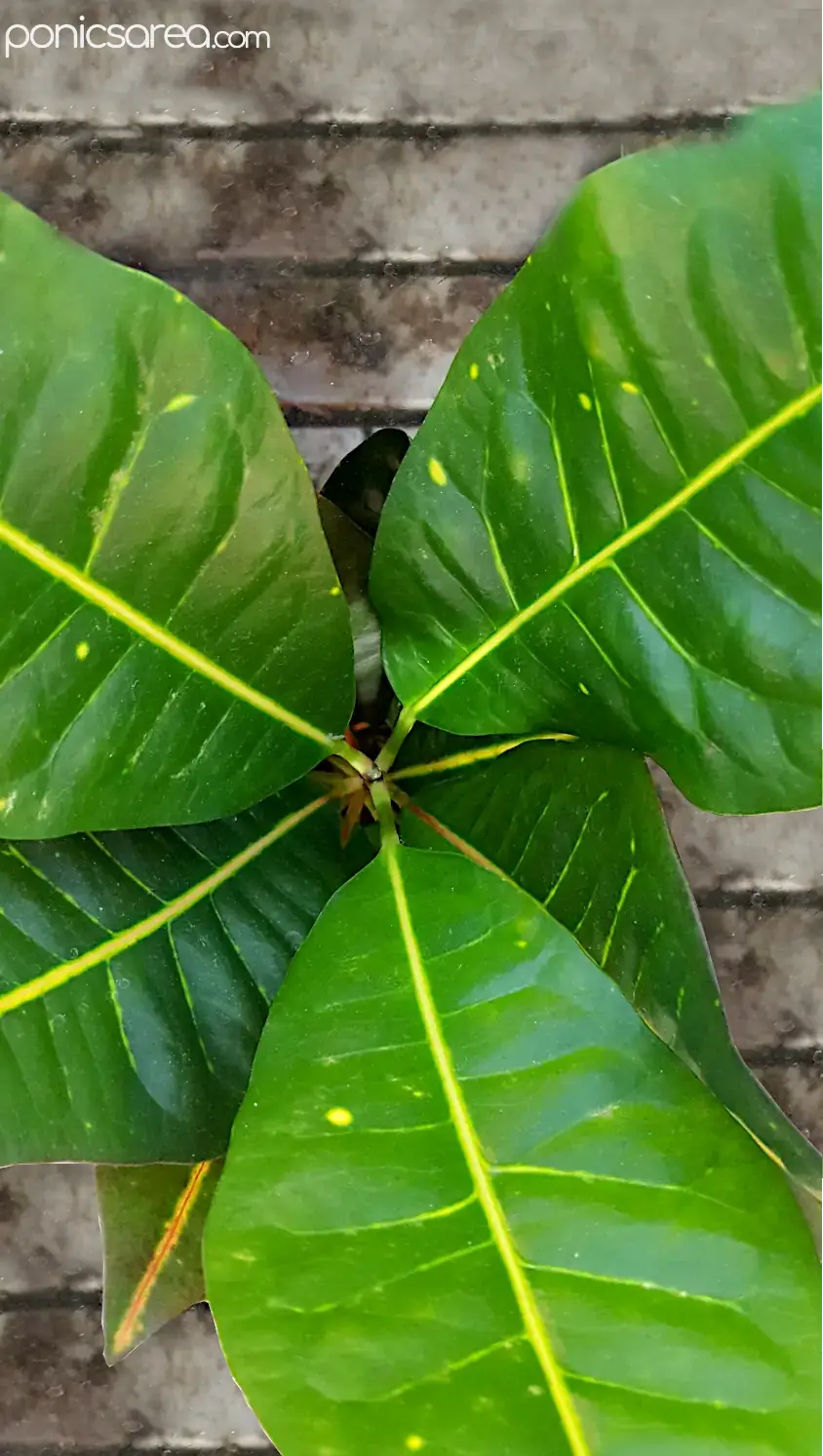
When picking out the best fertilizer for crotons, you should remember one thing: go for acid-producing fertilizers. Those who work for azaleas and gardenia will work for these plants, too.
How often should you use an acid-producing fertilizer? About 3 times a year. You can also use a foliar nutritional spray containing trace elements once or twice a year.
Moreover,
You should choose a fertilizer that’s high in nitrogen and potassium. An NPK fertilizer contains 3 main elements: N (nitrogen), P (phosphate), and K (potassium).
The reason why crotons don’t need a high amount of phosphate is that phosphate promotes plant blooms. Nitrogen is needed for leaf growth and potassium is needed for strong roots and stems.
The best fertilizer for crotons will have a 3-1-2 ratio, meaning there should be 3 times more nitrogen than phosphate and 2 times more potassium than phosphate.
An 18-6-12 NPK fertilizer is an example of how that ratio would play out.
A balanced fertilizer, with the same equal amounts of nitrogen, phosphate, and potassium, like a 20-20-20 NPK fertilizer can also work for crotons, as the research from University of Florida that I linked to above demonstrates.
However,
Be aware that excess fertilizer can reduce the coloration, the colors will not be as bold.
Slow-Release fertilizer vs Regular fertilizer
If you’re using a slow-release fertilizer, then you can start the feeding in late February, early March for the first time.
You can do another feeding in May and then one in July. This way you’ll avoid feeding the plant in autumn, when it gets ready to be mostly dormant during the wintertime.
It doesn’t make sense to feed the croton during the winter, especially if you’re using a slow-release fertilizer.
If you’re using regular fertilizer (granular and liquid plant food), you can opt for light monthly doses if that’s what the instructions recommend, with a slower rate during winter (once every 2 months).
How to Take Care of Crotons
This is a perennial plant with tick leathery leaves of different bright colors. It’s this combination of unique colors on big strong leaves that makes it look exactly what it is: a tropical plant that can make your house or garden so much more exotic and vibrant.
It’s no wonder that people look for the best fertilizer for crotons. It’s totally worth it for these exotic plants.
What you might not know is that, as it ages, the leaves can turn to nearly black. I don’t find it a pretty sight. I definitely prefer a full colorful shrub and that’s what you’re going to get if you follow some simple steps, including using a fertilizer for crotons regularly.
These are not demanding plants even though you would imagine so based on the fact that they’re tropical plants. They’re also resilient plants so, if you’re faced with a scrawny, with colors faded shrub, then you can remedy all that.
1. Warm climate
If you’re living in places with warm humid summers you can grow crotons outdoors. It is recommended to be brought indoors when nighttime temperatures drop to 50 degrees F (10 degrees C).
In general, the temperatures should be above 60 degrees F all year. To give you an example, Florida is definitely a perfect climate for crotons.
But you can be quite reassured that even if freezing temperatures damages the plant quite badly, it will almost always be able to come back when warm temperatures return.
Crotons can also be grown as potted plants if you live in an apartment. It adapts to both environments since this is quite the resilient plant.
2. Potting soil
A good potting soil/mix will get you a long way in growing a beautiful plant. Let’s see what you can use as potting mix for potted crotons.
If you’re making your own potting mix, you can follow a simple recipe: 1 part peat moss, 1 part pine bark, and 1 part coarse sand.
The simplified version is 1 part peat moss with 1 part coarse sand. You will find a lot more info on this soilless potting media at carnivorousplants.org. How cool is that name?
Peat moss is is the most common ingredient for soilless mixes, you can find it anywhere and it’s cheap. However, because it holds large amounts of water, it needs something that allows the water to pass through, like sand. Sand will provide that needed drainage. A more expensive, lightweight replacement for sand is perlite.
If you’re using perlite you can go by this recipe for foliage plants: 2 parts peat, 1 part perlite, 1 part coarse sand.
This website recommends a combination of organic compost and peat moss.
So, there are plenty of choices when it comes to making your own potting soil for crotons. Or you can just buy one. Let’s see what else you need to know about this tropical plants.
3. Bright light
This is the major contributing factor when it comes to those vibrant colors that we see in pictures.
If you’re going the potted plant route, growing crotons as houseplants, then you must place it in a sunny window.
For potted growth, you need a medium composed of peat moss-pine bark-sand or peat moss-sand.
If it doesn’t have sufficient access to light, its growth will be stunted and the leaves might just maintain a plain green color, no reds no yellows no anything.
In the garden, they should have some protection from the full midday sun, to prevent to colors from burning out.
4. Plenty of water
Don’t allow your plant to dry out, whether it’s a houseplant or planted outdoors. If it’s a houseplant, don’t forget about ensuring good drainage to avoid rot.
Always strive to prevent the soil from drying out completely.
Keep the soil moist but not soggy, it’s a rule that works well for many plants. If you have experience with watering basil you know what I’m talking about.
Crotons also enjoy quite a wide range of humidity levels, they’re permissible in this regard. A humidity between 40% to 80% will ensure a beautiful growth. If you care about more precise facts, 70% humidity is optimal but it’s not as easy to achieve outside of a greenhouse.
If you’re growing it indoors and the humidity levels are on the low side, closer to 40% than to 70%, then you should mist it daily to avoid spider mites.
5. Regular pruning
Among the things you need to do, which include using a best fertilizer for crotons, regular pruning is just as essential.
If you forgo pruning, you risk growing spare and leggy crotons.
You don’t want to have it grow 20 feet in height and look completely unattractive.
Just like any other plant, the more you pinch out the buds the more it will turn into a full bold colorful bush.
As a houseplant, you can maintain a bushy shrub that doesn’t grow too tall by pruning it frequently. Just pinch above a node or leaf set any overgrown leaves or branches but try not to remove more than a third of the stem at one time.
Plus, be aware that crotons can stain fabrics and the stains are impossible to remove.
And that’s a very short introduction but comprehensive introduction to the world of croton plants, including some top picks for the best fertilizer for crotons.
Best fertilizer for crotons FAQs
Let’s recap what we learned in this article looking for the best fertilizer for crotons.
1. When should I fertilize my croton?
Generally, I recommend following the instructions that come with your fertilizer and combine those instructions with the notion that crotons should be fertilized during spring and summer, their active growing season. You can only fertilize once in early spring and twice in the summer but you can also follow the instructions recommended by your fertilizer about frequency. Still, keep in mind that we should fertilize our crotons during spring and summer, their active growing season.
2. Are coffee grounds good for croton?
Crotons thrive from acid-producing fertilizers. So coffee grounds can benefit crotons and other plants like African violets, gloxinia, monstera, peperomia, and philodendron. But we can also look for the best fertilizer for crotons if the use of coffee grounds doesn’t provide enough benefits, which might be the case.
3. What fertilizer is best for crotons?
If you want a fertilizer that is created for crotons and other similar plants, then I recommend the Dr Earth Exotic Blend that works for palm, tropical plants, and hibiscus. It’s specifically designed for exotic plants and it’s definitely amazing for taking care of crotons. On the other hand, if you’re looking for an universal option, a fertilizer that works for all our plants, then I recommend the Miracle-Gro Water Soluble All Purpose Plant Food as the best fertilizer for crotons.

